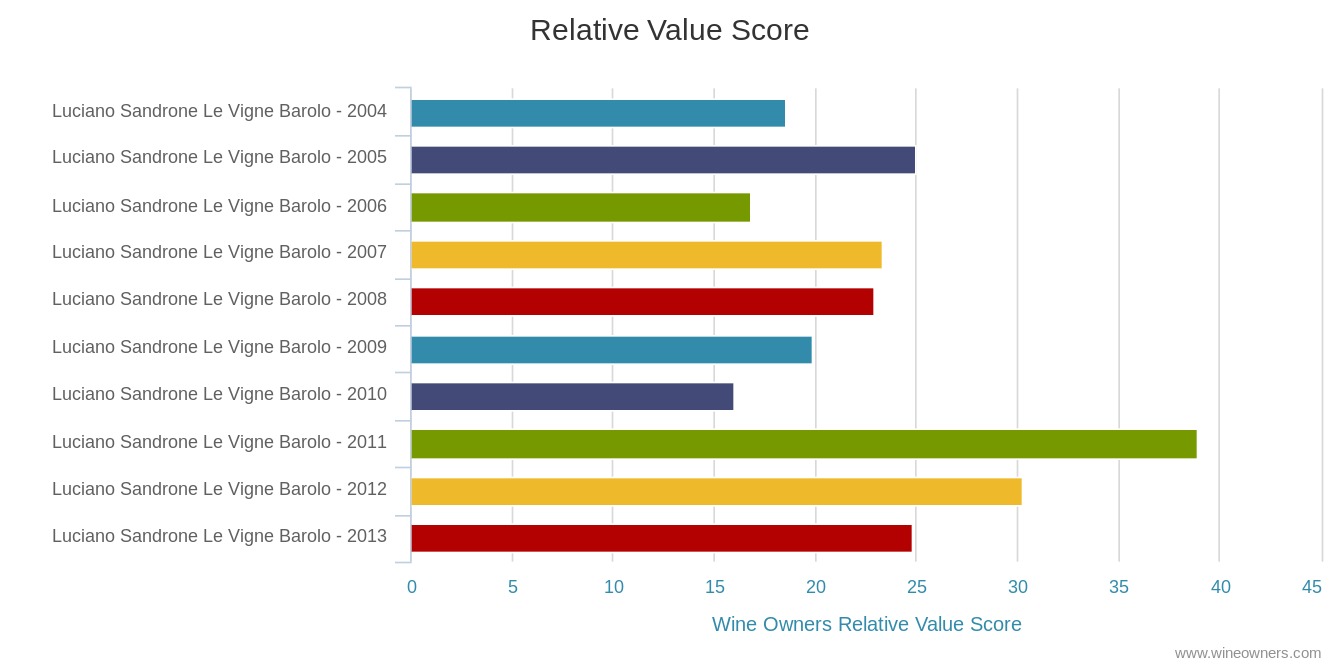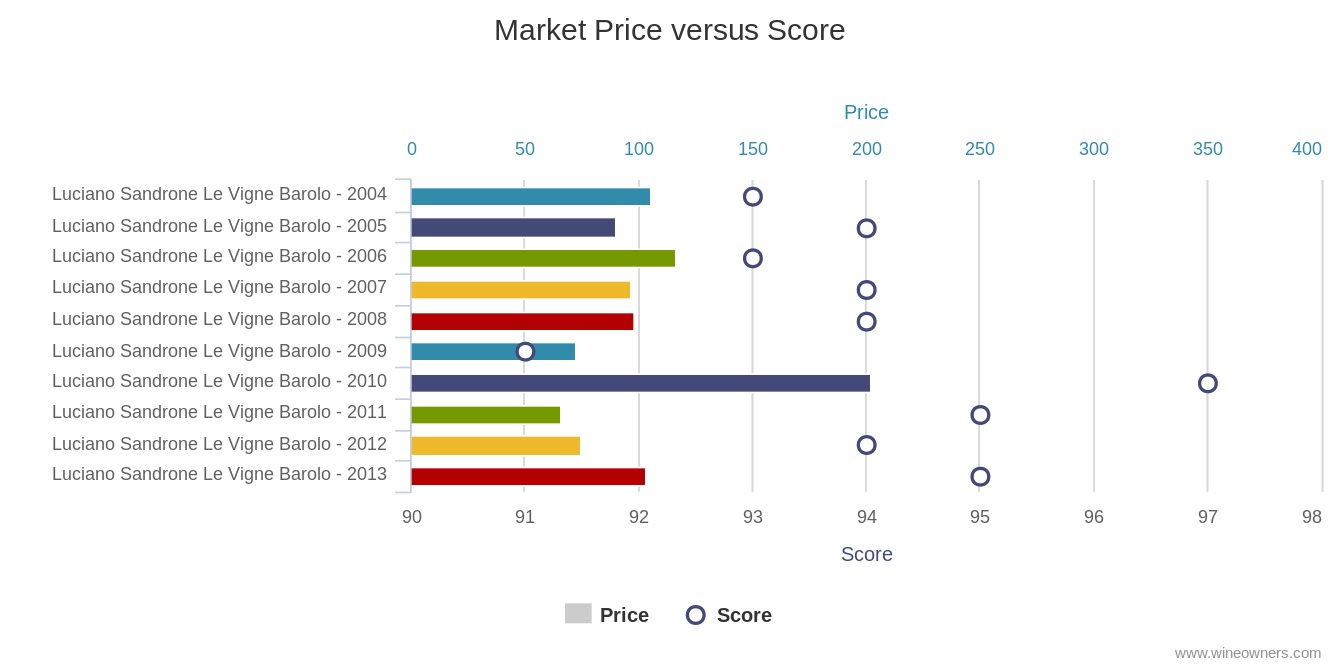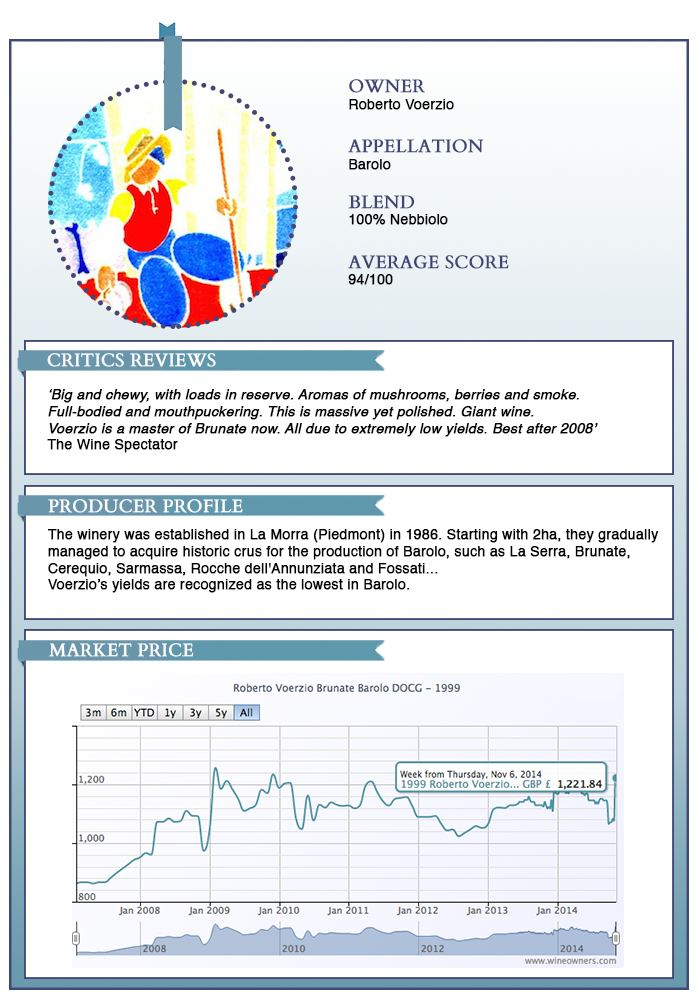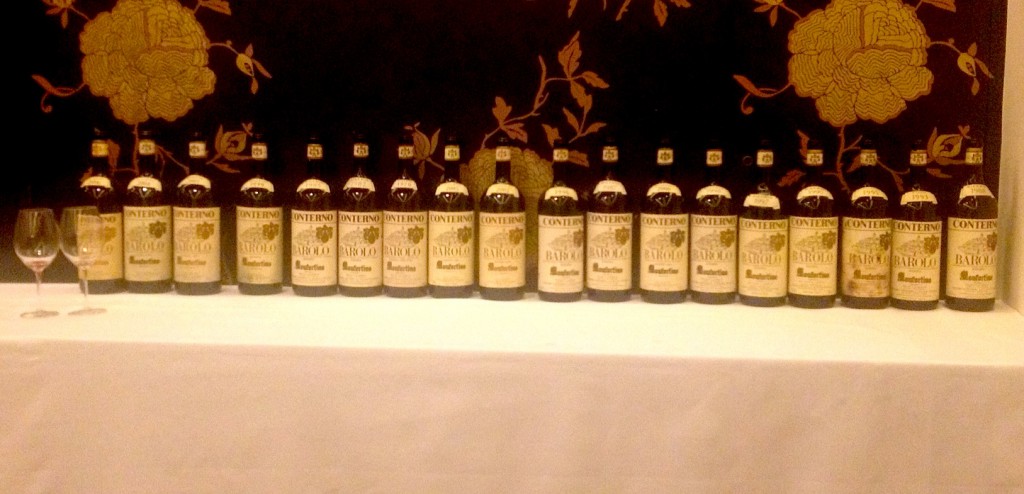by Wine Owners
Posted on 2022-03-14

Nebbiolo Day returned to London on 3rd March, showcasing Piedmontese passion and prowess in all things Nebbiolo.
I used it as an opportunity to taste taste taste, side by side a variety of producers, crus and vintages and delve right down into why Nebbiolo is deservedly enjoying more and more attention from collectors. There was not enough time or oral capacity to taste everything on offer, so I focused on Barolo and Barbaresco producers and may have missed some gems from Alto Piemonte and Valtellina.
My main 3 takeaways were as follows:-
1) Langhe Nebbiolo should feature in everyone's home cellar for immediate consumption. Pretty much universally under £20 per bottle and in some cases difficult to separate from regular Barolo. GD Vajra, Diego Morra, Domenic Clerico and of course GB Burlotto 2020’s all stood out as high class efforts, as did Vietti 2019 (possibly because the grapes are all declassified Barolo….)
2) 2016 was something special. The vast majority of wines on show were from 2018, and the quality for the most part was high (exceptional in many cases) but 2016 has that something extra. The 2016’s on show simply just shone! .... do not miss and showed Nebbiolo at its absolute pinnacle. Giovanni Sordo Rocche di Castiglione, Brezza Bricco Sarmassa, Diego Morra Monvigliero were the highlights and still very much in their juvenile state. They are still cheap for what they offer!
3) Flagship wines generally lived up to the hype. It may sound obvious, but when you taste through a range it is always reassuring when the top name (and most expensive) delivers the goods, and in 2018 Piedmont, they do. Tasting notes like “Jackpot” appear in my notes by Paolo Scavnio’s Bric del Fiasc 2018, Brovia Ca Mia and pretty much everything on show by Pio Cesare (increasingly excited with more exclamation marks as you move up the range).
Finally, a special mention to for ArnaldoRivera, the largest cooperative of growers who have been producing consistently high quality wines in recent years, and whose “Undicicomuni” now boasts a selected blend of 21 plots (up from 16 when I last tasted pre pandemic). I like to think of it as NV champagne and a delight to drink. The single vineyard expressions on show were also stunning, both Rocche dell’Annunziata and Villero 2018’s..very exciting times for the group.
Thank you to Hunt and Speller for organising a well attended and vibrant event, I can’t wait for next year.
And Miles would like to add: there are still many 16s available at initial offer price, this vintage was EPIC and should be in everyone's cellar. Covid helped keep prices down… please load up, you will not be disappointed…. promise!
Luke MacWilliam
March 2022
07375 594 196
by Wine Owners
Posted on 2019-07-09
The reputation of Luciano Sandrone continues to grow and grow, in keeping with the popularity of Barolo. Not as famous as the very top tier of Bruno Giacosa, Giacomo Conterno or Giuseppe Rinaldi but nestling just in behind, at a far more attractive price point.
Here we consider Le Vigne cru although the story is much the same for the slightly more expensive Cannubi Boschis (renamed Aleste in 2013 – in classic, designed to confuse, Piemonte style!).The consistency of the scores is incredible - through a mixture of very varied vintages from ’06-’15 the average is 95.3 points (Wine Advocate). Very significantly, the estate releases a small amount of the exact wines (under the labels Le Vigne Sibi et Paucis and Cannubi Boschis Sibi et Paucis) after ten years of age and they consistently achieve greater acclaim at that point, the ’07 going from 96 to 99 points (WA) for example. The range of points scored would indicate these are very fine wines indeed and given the rarity, must be only affordable to only the mega rich. Not so, prices start at c. £60 a bottle, rising to c. £170 for the stonking 2010 vintage.
For comparison sake I looked at some other fine wines from Burgundy and Bordeaux over the same ten year time period. Obviously these comparisons will never be exactly like for like but the differentials are not that great either; brilliant producers from the top tier of their respective regions, producing internationally acclaimed wines from the best local grape varieties designed to take advantage of their particular terroirs and climates to the full. We have a decent premier cru Burgundy, Domaine Dujac Aux Combottes, a sensational Pomerol on top of its game, Vieux Chateau Certan, and the king, Chateau Petrus (just for fun):
Comparisons between ‘06-‘15 vintages: |
Av. points
|
Av. Price
|
Highest price
|
Luciano Sandrone Le Vigne Barolo DOCG |
95.3
|
£98
|
£170
|
Domaine Dujac Gevrey Chambertin Aux Combottes Premier Cru |
91.6
|
£170
|
£234
|
Vieux Chateau Certan |
94.1
|
£134
|
£220
|
Petrus |
96.1
|
£2,200
|
£3,250
|
I suggest there is room for significant upside for this Barolo. And I am going to start selling the Combottes I own, the differential is absurd and further illuminates how crazy Burgundy prices have become. Production of fine wine in Barolo (and Barbaresco) is tiny compared to even Burgundy and completely miniscule in what we could consider the ‘investable’ candidates.
Please see charts for Market Price and Relative Value Scores for available vintage comparison.


Miles Davis
9th July 2019
by Wine Owners
Posted on 2019-03-14
2007 £1,300 per 6 WO Score 96
2010 £2,100 per 6 WO Score 100
Bartolo Mascarello is one of the true legends of Barolo, think Rousseau or Roumier in Burgundy terms, in case you’re not familiar with the ‘Knights of Nebbiolo’. And if that’s still confusing, think Liverpool (Football Club), but I would say that, wouldn’t I? In fact, to be drawn against Juve tomorrow morning could easily inspire a trip to Piedmont, with a bit more than hazelnuts to look forward to! I digress…
Maria-Teresa Mascarello took over from Bartolo, her father, in 1993, the estate having been founded in 1918. Beautifully simple in its creation, the wine is a blend of four of the top crus, or vineyards and has been consistently and spectacularly successful for decades.
In the charts above and below we have compared various well-regarded vintages of a similar era. These vintages are very good and very scarce, two of the most important factors for investors as they are squirreled away by the canniest collectors and prices have been rising. They are still a fraction of their Burgundian cousins however and we have no issue with recommending a buy, particularly the ’07 and the ’10, the cheapest relative value bets here:
Tasting notes, courtesy of Vinous Media:
2007: Mascarello’s 2007 Barolo shows just how compelling this vintage can be, even now. Sensual, layered and totally voluptuous in the glass, the 2007 shows the more flamboyant side of Barolo. I find the wine’s voluptuous, engaging personality impossible to resist. Sure, 2007 is not a classic vintage, but when a wine is this good, I say: Who cares?
2010: The 2010 Barolo is one of the most striking, hauntingly beautiful wines I have ever tasted here. Mysterious and slow to show its cards, the 2010 impresses for its inner perfume, sweetness and exceptional overall balance. Today the striking fruit and classic, austere elements of the vintage take turns in dominating the wine's balance. The 2010 was always magnificent in barrel. It is equally spectacular from bottle. Readers who can find the 2010 should not hesitate. Ideally I wouldn't dream of touching a bottle until age 15 or so, although I doubt I will personally have the discipline to follow my own advice!
The 2007 is the cheaper option from a classic vintage and the 2010 is the turbo charge version from the all-conquering 2010 vintage. Both are recommended.
by Wine Owners
Posted on 2016-09-30
We are currently in the midst of a renaissance in both interest and prices in a little known wine growing corner of France called Bordeaux. Having languished in the doldrums since mid-2011 the last 12 months has seen a resurgence of the pre-eminent fine wine producing region. Although still way short of the peaks of May 2011, prices are steadily rising, and a stellar 2015 vintage has breathed life into a moribund en primeur system. It is still some way from leaving the hospital, but at least ‘La Place’ is now out of intensive care. You may have noticed that our introduction to a piece purportedly about Piedmont has focused squarely on Bordeaux. There is a design behind this geographical madness, we assure you.
As Bordeaux has once again become flavour of the month (year?) it seems that Super-Tuscans have suffered by comparison. This is, of course, the equal and opposite reaction to the increase in interest in Super-Tuscans in the period mid-2011 to December 2014, when Tig, Sass, Masseto et al moved ahead in pricing terms as Bordeaux buyers looked for high quality wines in sufficient quantities, and with sufficient liquidity, to adequately substitute in…
(Again, where is Piedmont is all this?)
Bear with us.
The point here is that Bordeaux and Tuscany appear to have a pricing relationship based on the similarity of styles, and a similarity of production levels. They are yin and yang, and if the focus is on Bordeaux, then logically it follows there is an absence of focus on Tuscany.
So, the scene is set; now on to Piedmont. Where the Super-Tuscans are Johnny come latelies, deliberately combining the traditional virtues of Sangiovese with alien plantings like Cab Sav, Merlot and Cab Franc, the best wines of Piedmont – and we're thinking, naturally, of Barolo in particular – are a bastion of hundreds of years of mono-varietal wine making, where Nebbiolo is revered as King to the exclusion of all others. Many wine lovers would agree that the best wines of Barolo, from producers such as Conterno, Rinaldi, Giacosa et al, are a match for anything made in France in terms of complexity, balance, ageing potential and sheer quality. If, as seems to be the case, Tuscan wines are perceived as an alternative to Bordeaux, then it stands to reason Piedmont is a natural counterpoint to Burgundy. Single dominant varietal? Check. Small average production levels per producer? Check. Passionate following by hardcore wine lovers? Check. Both regions have even undergone similar improvements in quality control, with Burgundy improving through the 80s and Barolo a little later, through the 90s. But…stratospherically high prices for the best producers? We're afraid the comparison falls down on this point.
Even the best producers in Barolo can be bought for a fraction of the prices paid for DRC, Leroy, Rousseau or Roumier. Certainly they aren’t cheap, but the huge increases in values that have been seen in the Bourgogne haven’t been replicated in Barolo. But things might be beginning to change. Interest in a broader array of regions by increasingly well-educated global wine buyers has opened doors into markets that didn’t exist a decade ago. Slowly, but with gradually increasing speed, these top Piedmont wines are attracting attention, and if (as many commentators believe) Burgundy prices may beginning to slow, plateau or even fall, then there is every chance that the relationship between Tuscany and Bordeaux may be mirrored by the Burgundy and Piedmont regions. Long term buyers of Burgundy, looking for value, could well switch attention to new areas, and thereby reduce exposure to Burgundy. Piedmont could well be the major beneficiary of any such move…
by Wine Owners
Posted on 2014-11-06

by Wine Owners
Posted on 2014-05-16
What was truly historic about this tasting was that every wine served was from magnum. Since Monfortino was not bottled in magnums every vintage (Roberto's father shied away from larger formats because they had to be hand-bottled) this tasting was of EVERY Monfortino vintage EVER bottled in mags.
The magnums all came from a collector in Italy, known to Roberto, and acquired by Antonio some time ago. Theoretically, because the wines have been stored in exactly the same conditions since release, what you were therefore tasting is the vintage differences, with the exception of the 1970 which was made from bought-in grapes as was the custom of the time. Cascina Francia was bought by Roberto's father in 1974.
The flights were arranged thematically. This was an inspired choice, with warmer vintages grouped together, cooler shades, modern day classics etc.
The magnums were decanted 4 hours in advance of the start of the dinner.
The wines were poured in advance of each course arriving, so that the wines could be tasted alone and with matched dishes.

Flight 1: To Start
Served with crispy chicken thighs and charred lettuce.
1988
Ripe, expressive nose, sweet and pronounced pepperiness. Pale brick rim, limpid ruby core. Really thick glycerol. Grippy and bright, with a persistent citric thread. Mouthwatering finish with tertiary leafy notes.
An hour later a bit loose-knit.
1993
Cool nose. Pure creamy fruit, subdued pepper, orange brick rim with a deeply coloured core. Fresh, intense fruit, orange zesty, progressive cedar notes. A little closed on the mid-palate then blooms into a very long finish.
An hour later rich, confit, firm and excellent.
Wine of the flight.
1995
Sweet nose, elegant, fruity and floral. Pale pink rim with orange tinge. Fluid, integrated palate, crystalline and precise.
An hour later, very complete. Grippy, heady fruit, masculine.
Flight 2: The warm vintages
Served with a layered Foie gras terine, pomegranate, sauternes gel.
1990
Warm pepper nose, powerful and spirity. Translucent rim. So young on the palate, with an amazing entry that is grippy with thrilling acidity. So young.
An hour later less grippy but still super-fresh and exciting. Another decade?
1997
Very overt nose; subtle blueberry notes followed by macerated cherries and summer pudding. Blueberries on the entry, texturally dense with a lifted mid-palate, mouthwatering. Vivid fluid palate and finish. Very expressive yet fine.
An hour later, nose has calmed down beautifully, stunningly layered palate with floral notes. Wine of the flight.
1998
Creamy nose, white pepper, liqueur. Pale orange rim, shining ruby core. Warm entry, a little less precision than the preceding wine, softly spiced fruit, confit aftertaste and a vibrant, fabulously driven finish.
2000
Rye bread nose, spirity, herbal and fresh, with pinot-like undertones. Pink-tinged, strawberry-coloured core. Supremely elegant palate, soft yet dry. Aside from the nose, you would never guess this was the product of warm vintage.
Flight 3: cooler shades
Served with beef Fillet Tataki, pickled onion and something called Wakame.
1987
Rich, heady nose, deep colour, pink tinged rim. Energetic and intense, dramatic yet elegant. Floral mid palate, powerfully and progressively builds to an endless finish. Perfect balance.
Wine of the flight (head)
1996
Not a good bottle sadly. Oxidative Bovril nose, fresh and mouthwatering , sherbet finish, short and un-knit. This was the better of the 2 bottles opened apparently, the first being corked (not served).
2002
Sweet, perfectly poised nose of red and soft fruits. Reminiscent of pinot within the strawberry flavor spectrum. Sweet, gentle pastille fruit. Very long. Beautiful and one for burgundy lovers. Adorable.
Wine of the flight (heart)
2005
Macerated fruit nose. Savoury notes with grippy cool tannins then dark brooding fruit with a sour twist to the mid-palate, before pushing on to an enduringly deep but firm finish.
An hour later, perfectly resolved.
Flight 4: the epic vintages
Served with cannon of lamb and lamb belly, cauliflower pureé and lentils - a masterpiece.
1970
Very alluring savoury nose. Surprisingly deep colour. Slightly gamey, intense and powerful, complex and perfectly poised. Flavours contained by the evident structure of the wine. The wine sings properly with the lamb.
Wine of the flight.
1982
Saline nose, faintly oxidative before it blows off then pure sweet fruit. Slightly volatile, very bright sexy fruit, very intense confit character lifted by a powerful freshness.
1995
Darkly fruited nose, very pure. Translucent scarlet colour. Such a lovely balance. Grainy palate. Elegant, deeply veined fruit.
1999
Primary nose of pure fruit, edgeless. Primary colour with the merest hint of a maturing rim. Stuningly defined, intense but balanced fruit. So refreshing. The ultimate food wine and a future monument for 10-20 years hence.
Future icon of the night.
Flight 5: modern day classics
Served with cheese.
2001
White pepper nose, pure and pale rimmed, limpid ruby, pretty medium weight.
2004
Ripe, fleshy and overtly fruity nose. Deep colour, purple-rimmed. Structured, powerful, grainy palate.
2006
Peppery, fruity, fresh cool nose. Classic form. Very pretty ruby colour. Glycerol drenches the side of the glass. Stunningly pure, linear fruit
Wine of the flight.


